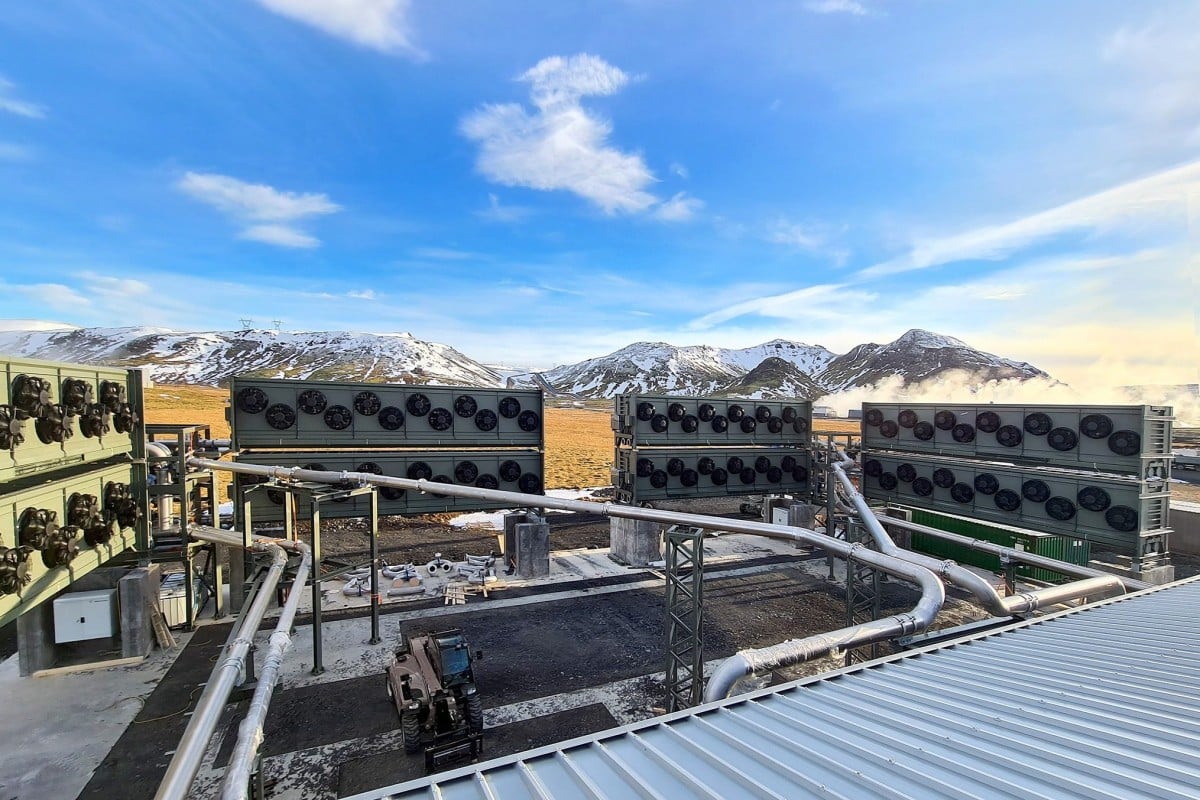
Direct air carbon capture: can this technology remove and store enough CO2 to fix our climate crisis?
- Swiss start-up Climeworks has successfully extracted carbon dioxide from the air and injected it into the ground, for the first time on behalf of its clients
- A UN body has warned that regardless of how quickly greenhouse gas emissions are slashed, we still must remove CO2 from the atmosphere to avoid climate disaster
 Climeworks’ facility in Iceland filters the carbon dioxide from other air particles and pumps it underground where it can be stored permanently. Photo: Captured on Facebook
Climeworks’ facility in Iceland filters the carbon dioxide from other air particles and pumps it underground where it can be stored permanently. Photo: Captured on FacebookA Swiss company said last month it had certifiably extracted carbon dioxide (CO2) from the air and permanently stored it in the ground – for the first time on behalf of paying customers.
Climeworks is a start-up that was created in 2009 by two Swiss engineers. The company said its facility in Iceland had successfully removed carbon dioxide from the atmosphere and injected it into the ground, where it would very gradually be transformed into rock.
Companies including Microsoft, Stripe and Shopify are clients of Climeworks. These clients have bought into the company’s future carbon removal services, to compensate for their greenhouse gas emissions.
The start-up said it hoped “to lead as an example for peers, customers and policymakers alike that are committed to climate action”.
The ozone layer is healing, but schemes to curb the heat of the sun create new issues
The Paris Agreement was accepted by nearly all the world’s nations in 2015. It called for the rise in the Earth’s average temperature to be limited to 1.5 degrees Celsius. Scientists say this amount would keep climate change’s impact at manageable levels.
Many businesses rely heavily on carbon offset schemes based on afforestation – or planting trees to make a forest – to make up for continuing carbon emissions.
But there has been growing interest in a new carbon dioxide removal method – a chemical process known as direct air carbon capture and storage (see graphic). Climeworks is the industry leader in this method.
Climeworks’ direct air carbon capture facility in Iceland is the largest in the world. So far, it removes in a year what humanity emits in three to four seconds.
But it remains to be seen whether this can be done at a larger scale to address the world’s climate crisis.
In its report last year, the United Nation’s Intergovernmental Panel on Climate Change warned that regardless of how quickly the world slashes greenhouse gas emissions, it would still need to remove CO2 from the atmosphere to avoid climate catastrophe.
Agence-France Presse
More about carbon dioxide removal and other ways of doing it
As its name suggests, carbon dioxide removal (CDR) refers to the process of removing carbon dioxide from the atmosphere and locking it away underground or under the ocean floor for a long time. According to a 2020 World Resources Institute report, this can be done naturally or through the use of technology such as direct air carbon capture and storage.
Natural methods of CDR include planting more trees. This is one of the best ways to remove carbon dioxide because of a tree’s ability to sequester and store carbon for as long as it is alive. It is estimated that Earth’s forests absorb 7.6 billion metric tons, or one-third of global emissions, every year.
Other natural ways of removing carbon dioxide include coastal blue carbon. This method involves creating new coastal wetlands such as mangrove forests and salt marshes. These habitats are especially efficient in removing and storing carbon dioxide from the air and surrounding waters.
However, none of these measures beat cutting down our overall carbon footprint. This means reducing our reliance on fossil fuels and switching to climate-friendly energy sources.